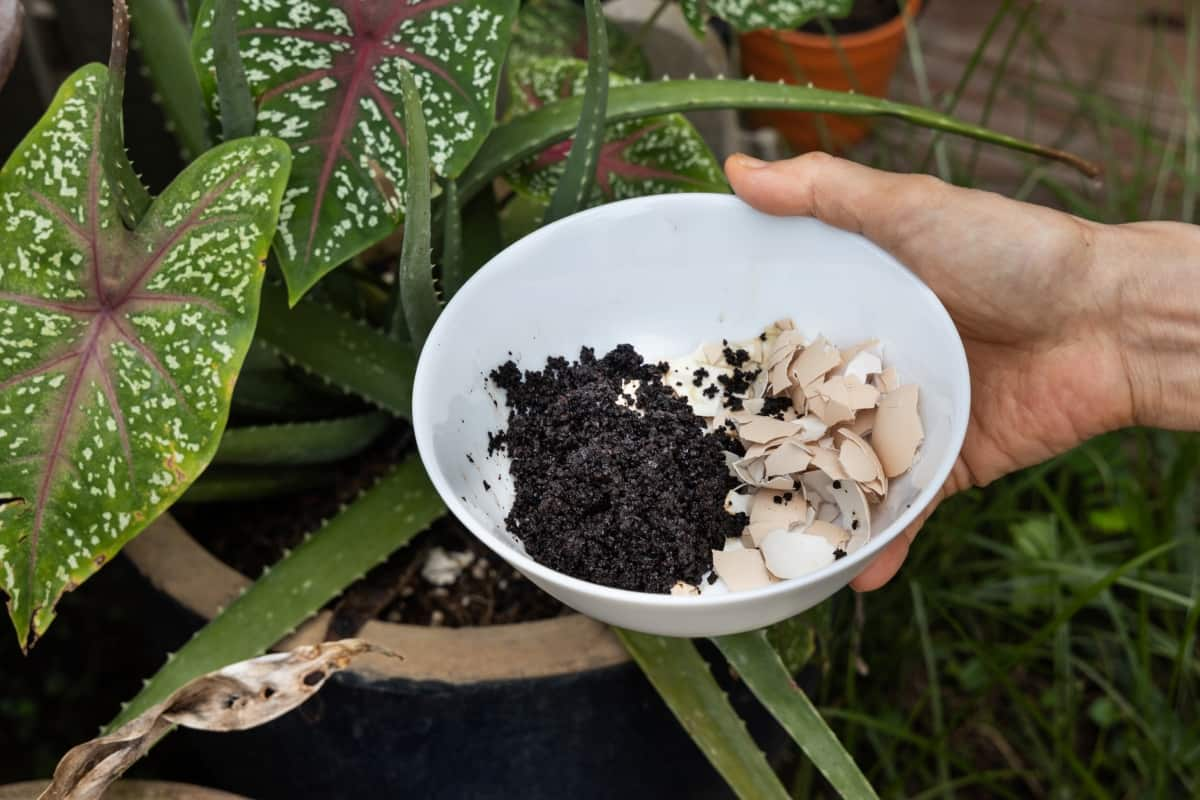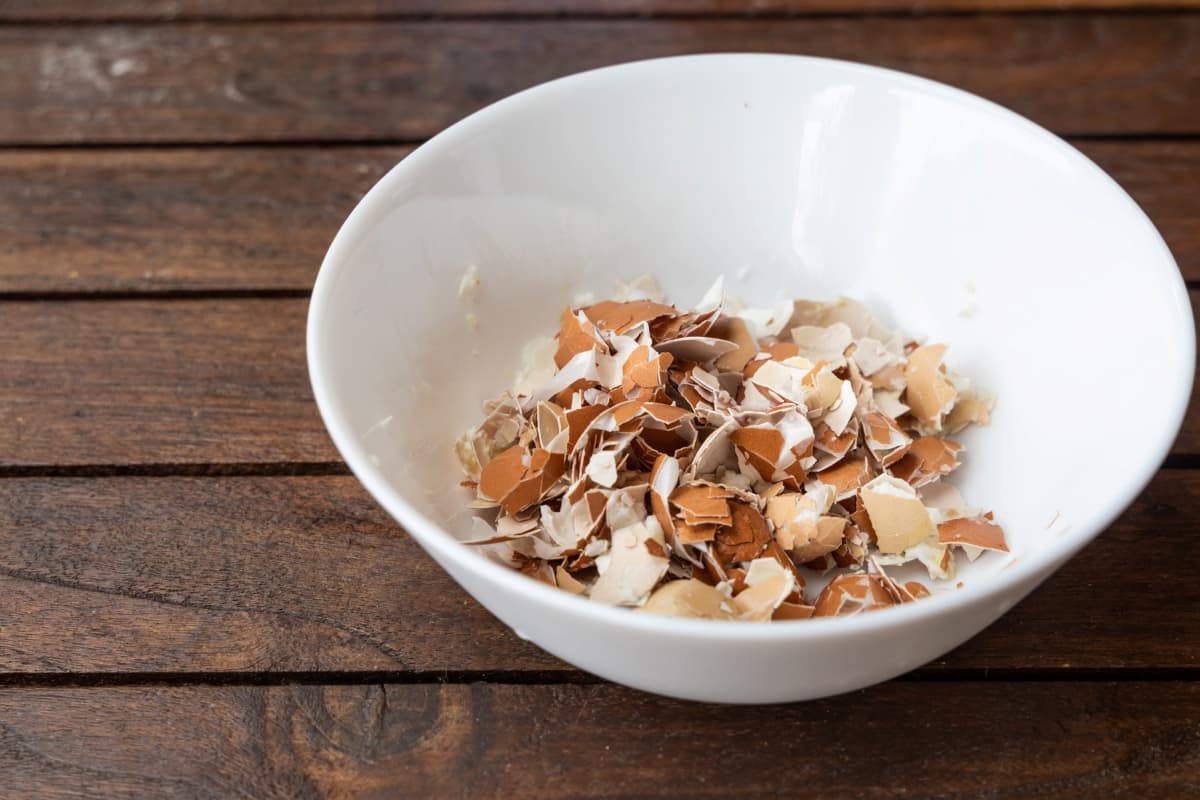Gardening lovers are constantly on the hunt for efficient and natural methods to increase the overall health of their plants as well as the amount of produce they produce. Among the various organic fertilizers available, eggshells have emerged as an excellent option. Here we learn about the importance of eggshell fertilizer for your garden, its benefits, its effectiveness as an organic fertilizer, and which plants do not appreciate using eggshells.

Eggshell Fertilizer
What are Eggshells Made Of?
Eggshells primarily comprise calcium carbonate (CaCO3), a naturally occurring compound that makes up around 94% of an eggshell’s weight. The remaining 6% consists of other minerals, such as magnesium, phosphorus, and trace elements. These nutrients play a crucial role in the overall health and development of plants.
Benefits of Eggshells as Fertilizer
The high calcium content in eggshells makes them a valuable addition to your garden. Calcium is necessary for the formation of strong cell walls in plants and aids in the protection of those plants against diseases such as blossom end rot, which affects tomatoes and peppers. It also aids in the development of healthy root systems and increases the plant’s ability to absorb nutrients.
Furthermore, eggshells contain essential micronutrients like magnesium, which plays a vital role in photosynthesis, and phosphorus, which promotes root growth and flowering. These minerals are necessary for robust plant growth, and the slow-release nature of eggshells ensures that these nutrients are available over an extended period.
Effectiveness of Eggshells as Organic Fertilizer
As an organic fertilizer, eggshells have several advantages. They are inexpensive and environmentally friendly, making them a sustainable option for gardeners. The calcium carbonate in eggshells acts as a liming agent, helping to balance soil pH levels and improving plant nutrient availability. Eggshells also help improve soil structure by promoting aggregation, allowing for better water infiltration and root growth. Additionally, they can deter pests like slugs and snails due to their sharp edges, providing a natural form of pest control.
What Plants Don’t Like Eggshells?
While most plants benefit from the addition of eggshells, some plants prefer acidic soil and may not thrive with the increased calcium and alkalinity provided by eggshells. These include:
- Acid-loving plants like blueberries, rhododendrons, and azaleas, which require a lower pH to absorb nutrients effectively.
- Some root vegetables, like sweet potatoes and radishes, which may develop a bitter taste or become malformed if they receive too much calcium.
In case you missed it: How to Grow Kitchen Herbs in Eggshells: DIY, Step-By-Step Guide for Beginners

How to Use Eggshells in Your Garden
Preparing Eggshells for Use
The first step in using eggshells as a fertilizer is to prepare them properly. After cracking open an egg, rinse the shell thoroughly to remove any residual egg white, as this can attract pests and create unpleasant odors. Allow the shells to air dry completely. Drying the eggshells can be done by placing them on a tray or a drying rack, ensuring they are not stacked on each other. Depending on the humidity in your area, it may take a few days for the eggshells to dry fully.
Crushing or Grinding Eggshells
Once the eggshells are dry, they need to be crushed or ground into smaller particles to make them more accessible for plants to absorb. Eggshells can be crushed by putting them in a plastic bag and then smashing them with a rolling pin or the base of a heavy jar. This will result in the eggshells being broken up into smaller bits. Alternatively, you can grind the eggshells into a fine powder using a blender, food processor, mortar, and pestle. The smaller the particles, the faster the nutrients will be released into the soil, providing a more immediate benefit to your plants.
Applying Eggshells Directly to the Soil
To apply eggshells directly to the soil, simply sprinkle the crushed or powdered eggshells around the base of your plants, taking care to avoid direct contact with plant stems, as the sharp edges can cause damage. You can also mix the eggshells into the top layer of soil or incorporate them into your garden bed when planting new seeds or seedlings. Water your plants thoroughly after applying the eggshells, as this will help to release the nutrients into the soil.
Using Eggshells in Compost
Adding crushed eggshells to your compost pile or vermicomposting system is another excellent way to incorporate them into your garden. As the eggshells break down in the compost, they release their nutrients slowly, creating a nutrient-rich, organic fertilizer for your garden. To add eggshells to your compost, simply scatter them evenly over the top of your compost pile and mix them in with a shovel or pitchfork. If you are using a vermicomposting system, add the crushed eggshells directly to the worm bin.
Making Eggshell Tea
Eggshell tea is a simple liquid fertilizer made by steeping crushed eggshells in water. To make eggshell tea, fill a large jar with water and add a handful of crushed eggshells. The nutrients will be able to dissolve into the water if you let the combination for at least 24 hours to sit out at room temperature. After steeping, strain the liquid and use it to water your plants. This method provides a gentle, slow-release fertilizer that can be applied regularly to support plant growth.
In case you missed it: Homemade Fertilizer for Fruit Trees

Conclusion
Eggshell fertilizer is an essential addition to your garden, offering numerous benefits to your plants’ health and productivity. By recycling this natural resource, you not only reduce waste but also provide an inexpensive and eco-friendly solution to improving your garden’s soil. The high calcium content and presence of essential micronutrients make eggshells an effective organic fertilizer for most plants.
However, it is crucial to remember the specific needs of acid-loving plants and some root vegetables that may not appreciate the addition of eggshells to their growing environment. Adding eggshells into your gardening routine can promote stronger cell walls, prevent diseases, improve soil structure, and deter pests, all while utilizing a readily available and sustainable resource. Don’t throw away the eggshell the next time you cook an egg; instead, put it to good use in your garden.
- Feed Your Flock for Less: Top 10 Tips to Save on Chicken Feed
- Ultimate Guide to Ossabaw Island Hog: Breeding, Raising, Diet, and Care
- Hatching Answers: The Top 10 Reasons Your Chickens Aren’t Laying Eggs
- Eggs and Economics: Breaking Down the Cost of Raising Backyard Chickens
- Defend Your Greens: Proven Methods to Keep Iguanas Out of Your Garden
- Ultimate Guide to Cinnamon Queen Chicken: A Comprehensive Guide for Beginners
- Ultimate Guide to California Tan Chicken: Breeding, Raising, Diet, Egg-Production and Care
- Ultimate Guide to Marsh Daisy Chicken: Breeding, Raising, Diet, and Care
- 10 Types of Chicken Farming Businesses You Can Start for Profits